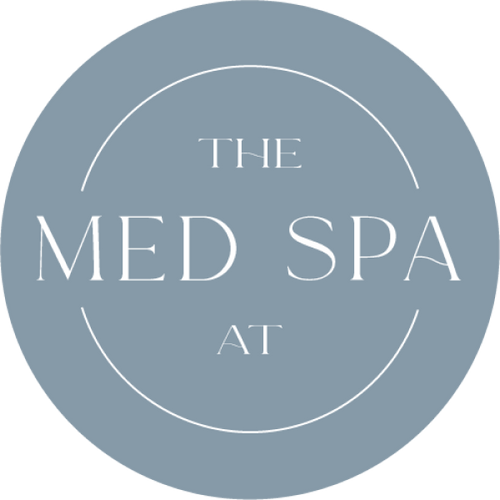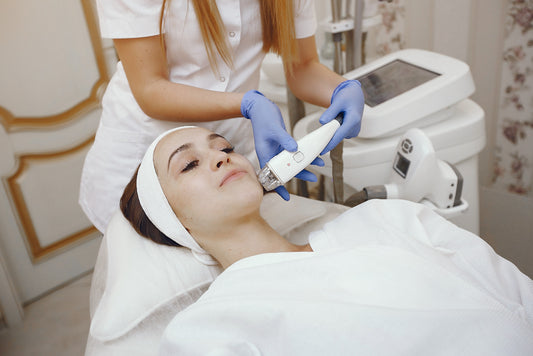If you are struggling with skin discoloration, wrinkles, or any other condition affecting your self-confidence, microneedling or chemical peels could be viable options. These treatments can address your concerns and improve the appearance of your skin.
The two relatively new skin treatments continue growing in trend as both require minimal downtime and overall safety under the supervision of medical experts.
Nevertheless, you must understand the distinctions between the two treatments to make an informed decision based on their specific skin type and needs.
So how to choose the best one for you? Let's find out!
Microneedling serves any skin type. It works great for treating sagging skin and stubborn wrinkles. On the other hand, chemical peels work well on people with fair skin. The process effectively reduces age spots, dark spots, and freckles.
The good thing is that you can do both treatments at home and also choose to get them done professionally in dermatology clinics. This will be better if you are more safety and perfection-conscious.
Microneedling Vs. Chemical Peel

Microneedling and chemical peels are cosmetic procedures designed to treat certain skin conditions that otherwise can be difficult to handle. DIY beauty tools, hacks, and home remedies might need to treat those skin issues more effectively.
Chemical Peel Vs. Microneedling —How Do The Procedures Work?
Microneedling is puncturing the skin using a dermal roller with thin needles. These micro-tears are created to trigger the body's natural healing process for skin trauma. As a result, it encourages collagen and elastin production to tighten your skin.
For the same reason, microneedling is also called collagen induction therapy. Collagen and elastin are best known for their capabilities such as:
-
Damage repair in different layers of the skin
-
Ridding your skin of the broken tissue
-
Replacing broken tissue with younger, healthier tissue
Even a needle with the shortest length can trigger and boost collagen and elastin production in your skin. Longer needles, however, treat deeper skin layers and repair more rooted concerns like sun damage and wrinkles.
You don't need downtime for short-needle sessions of microneedling. Yet, sessions that involve longer needles and deeper treatments may require more healing and recovery time. You will see visibly youthful, healthy skin after a few sessions.
Chemical peels treat your skin issues using a variety of chemical solutions. It's a skin resurfacing process that starts with thoroughly cleansing your skin while protecting the eye area.
Chemical peels are available in different strengths and utilize alpha-hydroxy acid, trichloroacetic acid, and phenol. These chemicals effectively eliminate dead or damaged skin, promoting skin rejuvenation.
Afterward, a healthcare provider administers a numbing cream or anesthetic, particularly when choosing a medium or deep peel. For deep peels, patients may also receive sedation.
Your skin is treated with a chemical solution containing acids and other active components, eliminating the outermost layer and discarding damaged skin cells.
The treatment may cause a stinging sensation, and new skin will gradually regenerate in its place. It's important to know that medium and deep chemical peels require longer recovery.
Now, depending on the treatment area, you can choose between light, medium, or deep peel. Popular types of peels include:
-
Light Chemical Peel
This superficial peel removes the epidermis —the outer layer of your skin. It visibly reduces wrinkles, acne scars, and uneven skin tone.
-
Medium Chemical Peel
This peel treats the epidermis and the upper portion of the middle skin layer (the dermis). It's good for deeper wrinkles and acne scars.
-
Deep Chemical Peel
A deep chemical peel is best for removing skin cells deeper into the epidermis. It works well for deeper scars, wrinkles, and precancerous growths.
How Can Chemical Peels or Microneedling Help You?
Microneedling and chemical peels are effective treatments to rejuvenate your skin, leaving it looking younger, shinier and healthier. These interesting techniques address various skin aging concerns, including scarring and sagging, and can transform damaged and lackluster skin.

-
Reducing Acne Scars
Both reliable cosmetic treatments - chemical peel or microneedling reduce the appearance of acne scars.
Microneedling allows your skin to heal; its natural healing mechanism reduces scars. Chemical peels remove layers of damaged skin from your face, so the scarring visibly vanishes or improves.
-
Reducing Sun Damage
You can say goodbye to years-long sun damage that snatched your skin's natural glow and elasticity. Direct rays of the sun break the stored collagen in your skin.
Microneedling can restore collagen and create a lasting reduction of sagging skin and wrinkles. Chemical peels burn away the top layer of damaged skin safely. It helps the new layer of skin to appear, which is more youthful-looking and smoother.
-
Smoothing Your Skin
The process of microneedling involves a dermal roller to produce tiny wounds. The healing process boosts collagen production and promotes smoother and healthier-looking skin.
Chemical peels also even out your skin tone and texture. It does so by removing damaged areas causing roughness to the skin.
Choosing the Right Procedure
Microneedling or chemical peel are now widely used to address common skin problems. But, the same therapy may only work for some.

Consider the following factors while deciding on the procedure that benefits you the most:
Chemical peels are best to treat skin surface and layers damages, including:
-
Wrinkles
-
Poor skin texture
-
Scarring
While microneedling treats Skin damage and conditions such as:
-
Hyperpigmentation
-
Sagging skin
Note: While certain cosmetic procedures, such as combining microneedling with PRP injections, can complement each other, it is also important to note that microneedling and chemical peeling are not typically combined.
Pros & Cons of Each Procedure

Microneedling pros include its suitability for all skin types. It is a less invasive skin improvement procedure that proactively treats deep sagging and severe wrinkles. Also, the less invasive microneedling can be done at home.
However, it's better to do it in a medical facility when looking for a heavier skin problem.
Some cons of microneedling include that it does not suit people with bacterial infections such as acne, psoriasis, or eczema. You may see results slowly as you will need multiple treatment sessions.
Pros of chemical peels include an even skin treatment in all portions of your skin. The peels are perfect for treating skin discolorations, even being a one-time procedure. The cons include longer downtime for deeper, more invasive procedures, which are more costly than microneedling.
Good & Bad Candidates for Both Procedures

Chemical Peels
Before considering a chemical peel, it's essential to understand that only some are ideal candidates for the procedure. Various factors determine whether someone is a suitable, potentially risky, or unsuitable candidate. Here are some key factors to consider:
Good
Patients with fair skin and light hair are less prone to discoloration during chemical peels than those with darker complexions.
Bad
People having darker skin might get permanent uneven skin tone due to chemical peels. Patients with severe wrinkles and loose skin may also have adverse reactions; they should talk to medical professionals and consider other treatments.
Chemical peels are also unfavorable for people suffering from herpes —the treatment can trigger flares. Additionally, those who have taken acne medication in the last six months can have increased downtime for their acne.
Microneedling
Microneedling also has specific criteria for determining suitable and unsuitable candidates. Although it can effectively address certain skin concerns, individuals with a history of slow wound healing and bacterial infections are at a higher risk. They may be better candidates for the procedure.
Good
Individuals experiencing various skin concerns can benefit from these treatments. These concerns include fine lines, wrinkles, uneven skin texture, loose skin, stretch marks, acne scars, sun damage, and other types of scarring.
Bad
Individuals with bacterial skin conditions such as eczema and psoriasis and those with active acne or who are in the healing stage of acne should exercise caution when considering microneedling. The presence of bacteria can enter the microchannels created during the procedure, leading to infections.
How to Get Started?
To achieve smooth, younger-looking skin, seek treatment from the Med Spa At's team at our Scottsdale and Rio Rancho clinics. During a consultation, they will carefully assess your aesthetic goals, review your skincare history, and consider your lifestyle to determine the most suitable treatment.
Call the office, or book an appointment online to learn more about effective skin treatments and optimal skin care.
The Bottom Line
Whether you choose microneedling or chemical peels to treat your skin, you will likely shed old skin cells and replace them with younger, newer ones. You can always go for the one that better suits your condition.
Consulting with a dermatologist or medical expert before getting any procedure will always be fruitful.



 Skin Treatments
Skin Treatments





